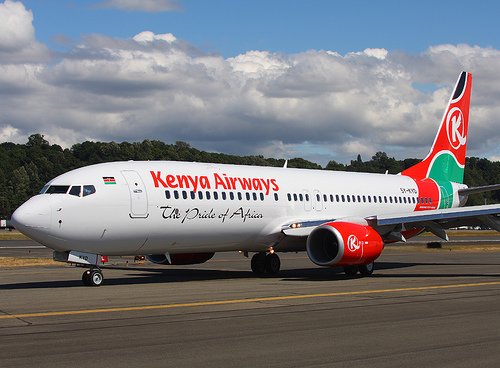Africa’s air passenger growth stalls in June amid global slowdown in demand

Africa’s airline industry remained in a holding pattern in June 2025, as the latest figures from the International Air Transport Association (IATA) revealed muted performance in both international and domestic travel segments—echoing a broader global deceleration in passenger growth.
The continent’s international passenger demand fell marginally by 0.3pc year-on-year, while capacity crept up by 0.3pc. This imbalance led to a slight erosion in passenger load factor (PLF)—a measure of how full flights are—falling to 74.6pc, down 0.6 percentage points from June 2024.
When domestic travel within Africa is included, the combined market recorded a modest 0.8pc rise in demand against a 1.5pc expansion in capacity. But again, this outpaced demand growth, leading to a PLF decline of 0.6 percentage points, still averaging 74.6pc.
While global aviation also witnessed a cooling trend—with passenger demand growing just 2.6pc year-on-year, against a 3.4pc increase in capacity—Africa continues to lag significantly behind. The continent accounted for just 2.2pc of total global passenger traffic in June.
According to aviation analysts, Africa’s underperformance in PLF, now 10 percentage points below the global average of 84.5pc, highlights long-standing structural issues. These include fragmented connectivity, limited interline cooperation among carriers, and competition from larger foreign airlines that dominate long-haul African routes.
IATA attributes some of the global slowdown to external shocks—including disruptions from ongoing military conflict in the Middle East—which affected international traffic, particularly routes between the Middle East and North America.
Commenting on the overall trend, IATA Director General Willie Walsh said: “In June, demand for air travel grew by 2.6pc. That’s a slower pace than we have seen in previous months and reflects disruptions around military conflict in the Middle East. With demand growth lagging the 3.4pc capacity expansion, load factors dipped 0.6 percentage points from their all-time record-high levels. At 84.5pc globally, however, load factors are still very strong.”
However, Africa’s demand softness appears more rooted in economic fundamentals and supply-side pressures.
Comparatively, other regions saw more dynamic shifts: Latin America led growth with a 7.9pc jump in demand, while Asia-Pacific and Europe saw gains of 5pc and 2.2pc respectively. North America and the Middle East both experienced slight contractions in traffic volumes.
Load factor declines were a global phenomenon in June, with every major region recording lower seat occupancy than a year ago, largely due to capacity growth outpacing demand recovery.
For African airlines, however, the load factor differential underscores persistent profitability challenges. Industry players are calling for more investment in liberalised air access, harmonised regulatory regimes, and intra-continental cooperation under initiatives such as the Single African Air Transport Market (SAATM).
With global schedules for August 2025 showing only a modest 1.8pc rise in capacity, analysts expect load factors to remain relatively steady—although African carriers may still need more aggressive demand stimulation measures to lift utilisation and revenues.


 African Airlines buck global trend with strong June air cargo growth — IATA
African Airlines buck global trend with strong June air cargo growth — IATA
 Algeria offers 210 scholarships to African students in 2025, strengthens ties with Uganda
Algeria offers 210 scholarships to African students in 2025, strengthens ties with Uganda
 Tribute to Bert Kraan, architect of AviAssist and lifelong advocate for safer African skies
Tribute to Bert Kraan, architect of AviAssist and lifelong advocate for safer African skies
 Uganda reaffirms commitment to green industrialisation as Kiira Motors announces second e-Mobility Expo
Uganda reaffirms commitment to green industrialisation as Kiira Motors announces second e-Mobility Expo
 IATA flags barriers to aviation growth in Africa
IATA flags barriers to aviation growth in Africa
 Equity Bank eyes diaspora outreach at COUSA Convention
Equity Bank eyes diaspora outreach at COUSA Convention
